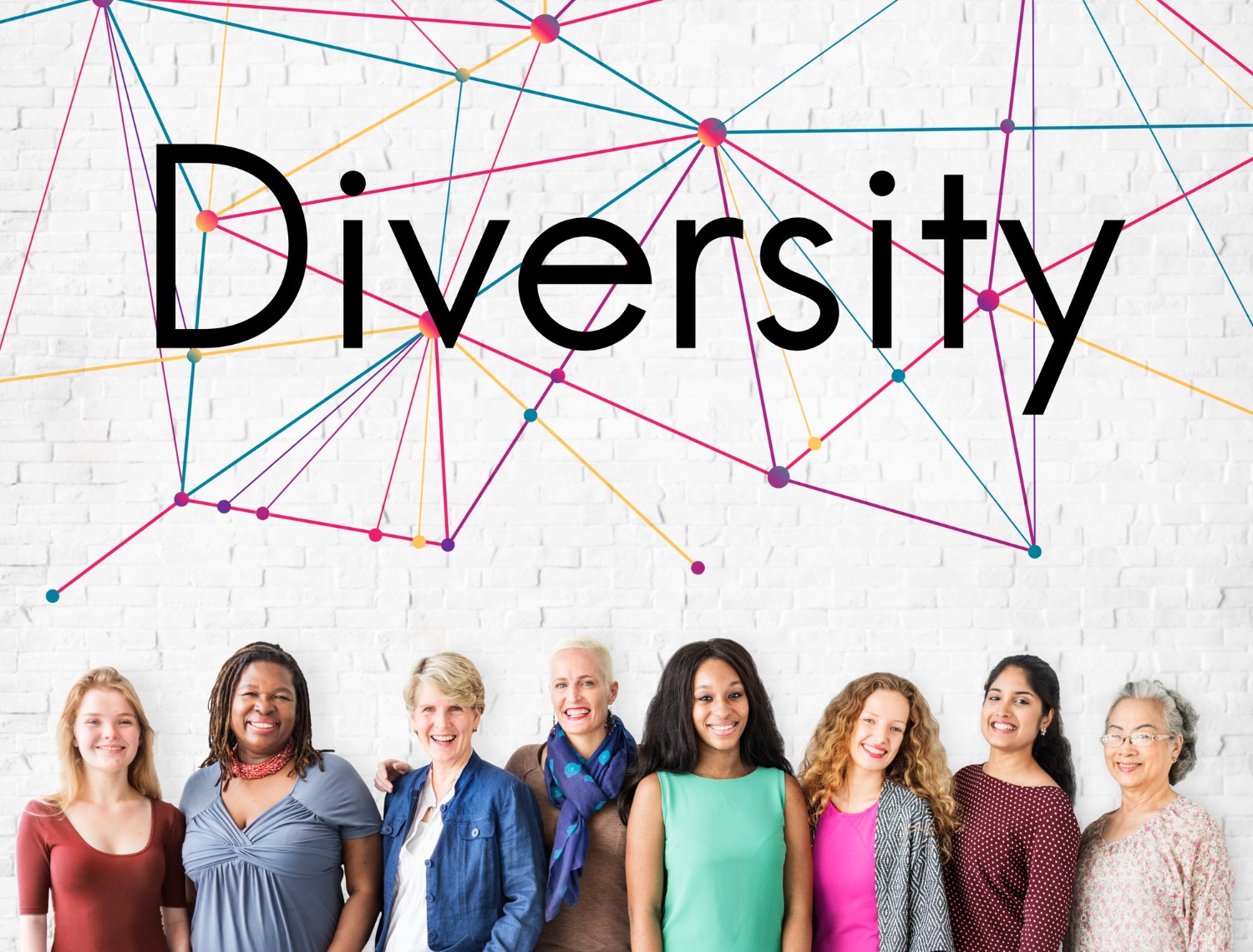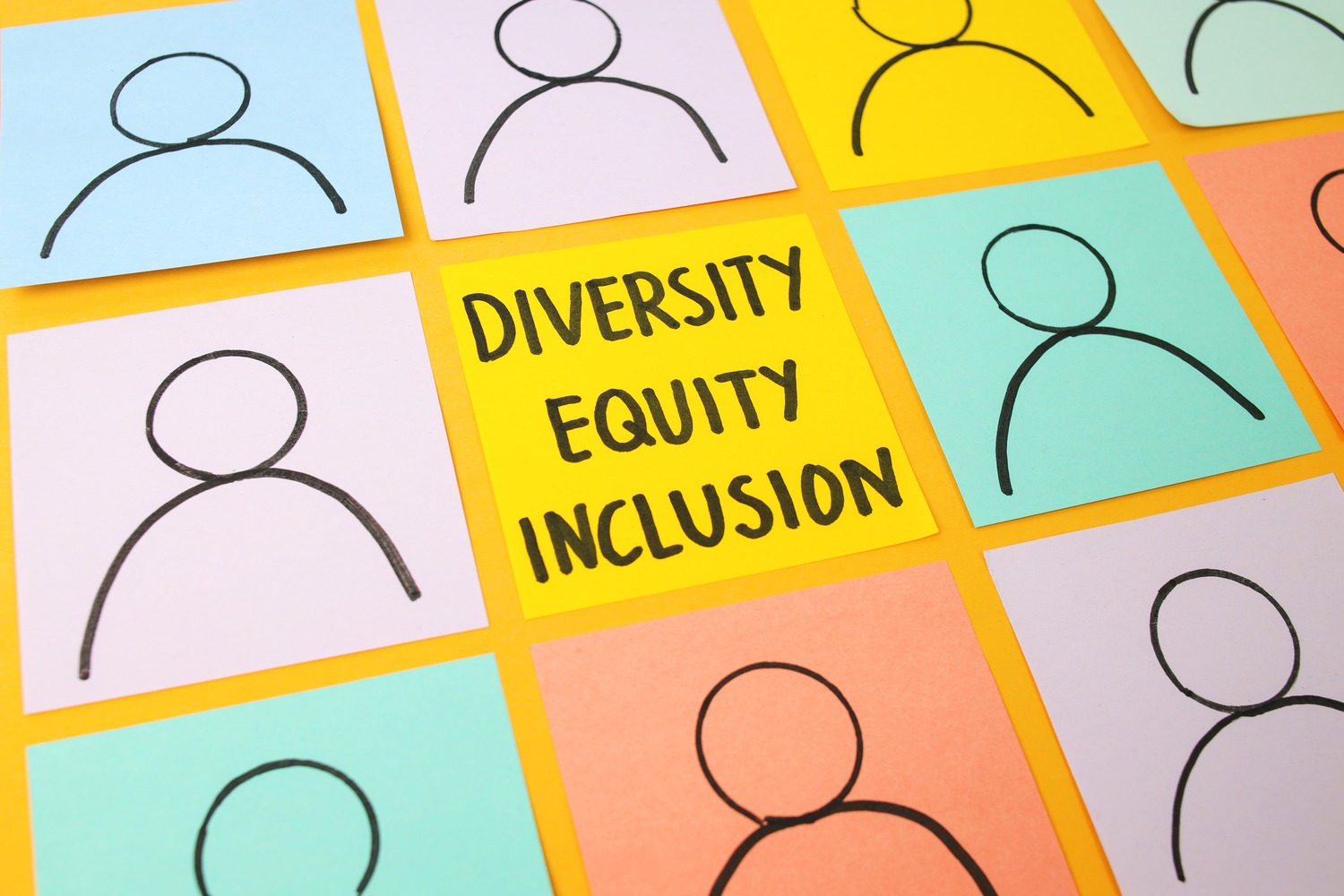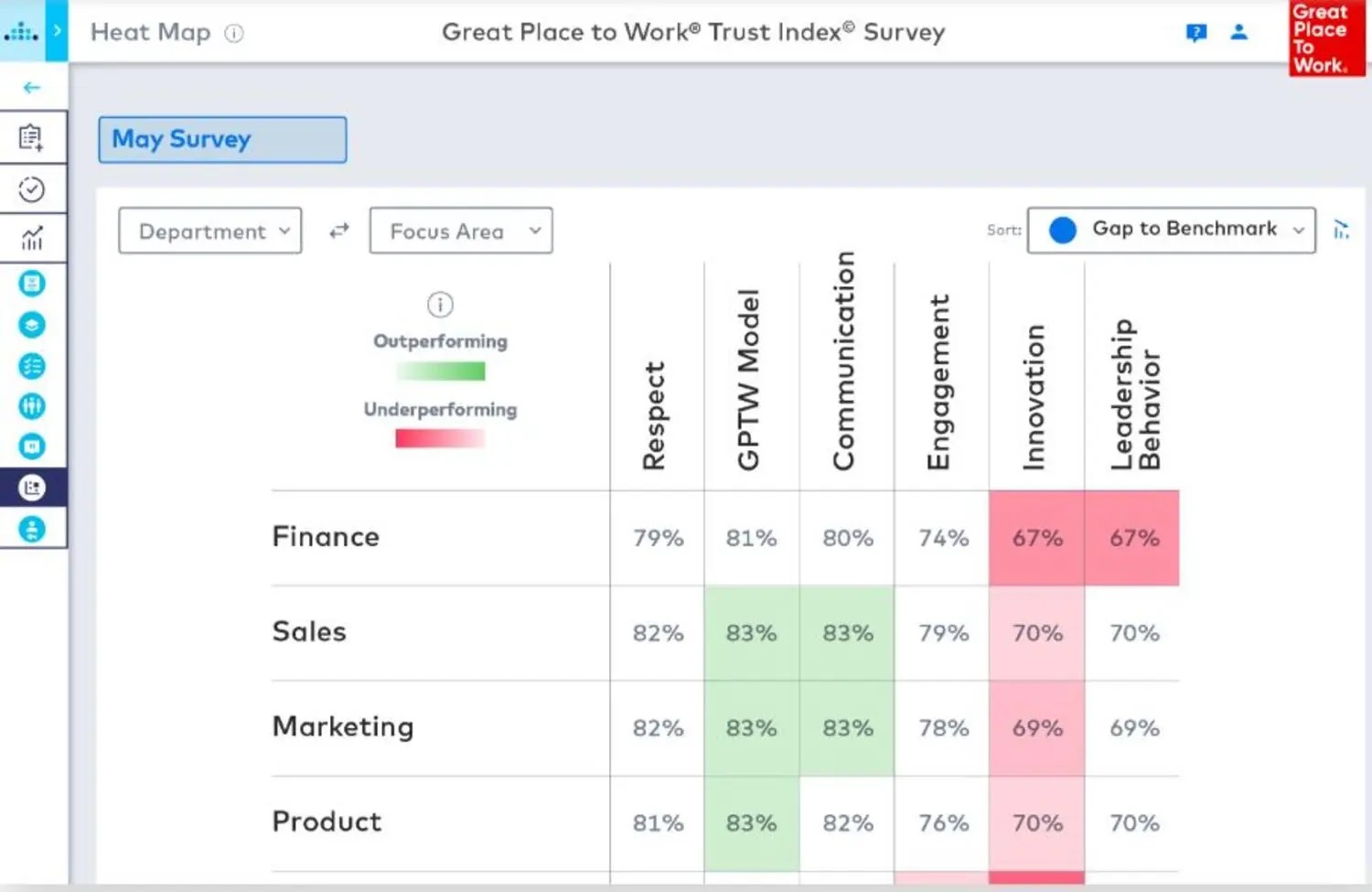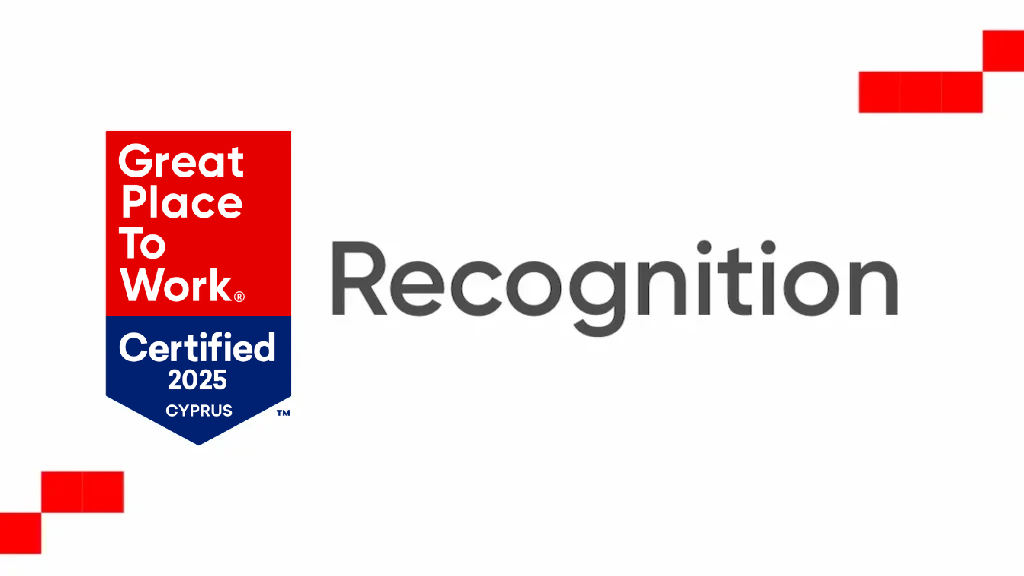In Cyprus, diversity is more than a buzzword — it’s a driving force behind modern, forward-thinking businesses that break barriers and redefine success.
From Limassol’s thriving tech hubs to Nicosia’s global finance sector, teams made up of people from varied backgrounds fuel workplaces with creativity, fresh ideas, and innovative problem-solving. Unique life experiences and perspectives lead to solutions others might overlook, boost productivity, and open doors to untapped markets. Research confirms it: organisations in Cyprus that embrace inclusion consistently outperform those that cling to a one-size-fits-all approach.
But diversity isn’t only about profits — it’s about people. Prioritising inclusion creates workplaces where every employee feels valued, inspired, and connected, fostering a deep sense of belonging that strengthens both morale and performance.
In this article, we’ll explore five key benefits of workplace diversity in Cyprus — and how it drives business success while enriching the professional and personal lives of employees across the island.
How is workplace diversity defined?
Workplace diversity is defined as the presence of employees with a wide range of different characteristics, backgrounds, and perspectives within an organisation—including differences in race, ethnicity, gender, age, sexual orientation, physical abilities, religion, education, socioeconomic background, language, and more.
A truly diverse workplace values and welcomes these differences, fostering an environment where everyone feels noticed, respected, and able to contribute their unique experiences and skills. Diversity goes beyond visible traits; it also encompasses less visible aspects like values, cognitive styles, family structure, and life experiences.
The purpose is not only representation but the creation of a culture where diverse viewpoints lead to greater creativity, innovation, and problem-solving. Workplace diversity means building teams that reflect the broader community, enabling organisations to benefit from a richer mix of ideas and a more inclusive, engaging, and equitable workplace.
What are the benefits of diversity in the Cypriot workplace?
Embracing diversity brings measurable benefits to Cypriot organisations, empowering them to attract and retain exceptional talent while securing a sustainable competitive edge. Studies show that companies with diverse teams—especially in terms of ethnicity and gender—are significantly more likely to outperform financially.
Globally recognised research highlights that such organisations are up to 35% more likely to achieve above-average financial returns, thanks to their breadth of viewpoints and superior problem-solving abilities. In Cyprus, adopting diversity helps businesses tap into a wider pool of highly qualified candidates, driving innovative thinking and boosting employee loyalty.
Workplaces that welcome employees from a variety of backgrounds cultivate a reputation as forward-thinking and inclusive employers. This not only sets them apart in a competitive market but also enhances their capacity to adapt, innovate, and serve the needs of a changing society.
1. Innovation and Creativity
One of the most important benefits of workplace diversity in Cyprus is the boost it gives to creativity and innovation. Creativity flourishes where diversity thrives. Cypriot teams, comprising diverse cultures, experiences, and perspectives, generate novel ideas, challenge conventional wisdom, and deliver breakthrough solutions. As an example, ECOMMBX, awarded Cyprus’s Best Workplace 2025, stands out for its innovative culture and progressive initiatives, showing how valuing diversity and employee well-being drives both creativity and business success.
Several key benefits emerge:
- Diverse teams frequently devise disruptive solutions, responding to customer needs in imaginative new ways.
- Cognitive diversity actively counters groupthink, promoting robust problem-solving and adaptability.
- Multicultural talent offers unique market insights, enabling innovation tailored to a broader spectrum of customers.
In Cyprus, fostering a culture of inclusion and diversity is foundational for sustained creativity and a strong industry position. Companies that champion diverse perspectives can expect dynamic teams, enhanced customer satisfaction, and enduring business growth.
2. Better Decision-Making and Problem-Solving
Another clear advantage of workplace diversity is its ability to strengthen decision-making and problem-solving. Teams composed of individuals with varied cultural, professional, and life experiences approach challenges from multiple angles, leading to well-rounded, informed choices. Research shows that cognitively diverse teams solve problems faster and make better decisions than homogenous groups—outperforming them in quality and speed up to 87% of the time.
The reason is simple: diverse perspectives encourage deeper evaluation, reduce the risk of groupthink, and spark constructive debate. While it can be more challenging to integrate multiple viewpoints, this very complexity drives richer analysis, sharper critical thinking, and more innovative solutions.
For Cypriot companies, nurturing a diverse workforce means unlocking these decision-making advantages—creating agile, adaptable teams that respond effectively to complex challenges.
This improved problem-solving capacity doesn’t just enhance productivity and collaboration; it also directly boosts business performance and supports sustainable growth in a competitive, fast-changing market.
3. Greater Employee Engagement, Well-Being, and Retention
An inclusive workplace is a powerful driver of engagement, well-being, and loyalty. When employees from diverse backgrounds feel genuinely respected and valued, they are more likely to be motivated, productive, and committed to their organisation. Reports say that combining diversity with true inclusion can lift engagement levels by an impressive 101%.
The impact on retention is equally striking. Studies show that companies with strong diversity and inclusion practices can see retention rates up to 68.3% higher than those without. This means fewer costly turnovers, more profound institutional knowledge, and stronger long‑term relationships between employers and their teams.
Inclusive organisations in Cyprus do more than just reduce recruitment costs — they create cultures where equality, authenticity, and belonging are part of everyday life. Employees who feel that they can bring their whole selves to work not only stay longer but also contribute more meaningfully to the company’s success.
When Cypriot businesses prioritise employee engagement, they create supportive workplaces that lift morale, build loyalty, and attract the top talent needed for sustainable growth.
4. Broader Talent Pool and Recruitment Opportunities
Embracing diversity significantly expands the talent pool and opens the door to richer recruitment opportunities. According to a report, 76% of job seekers consider a company’s diversity practices important when evaluating employers and job offers.
By adopting inclusive hiring strategies, organisations in Cyprus can attract top talent from a wide range of cultural, educational, and professional backgrounds — bringing in fresh perspectives, unique skill sets, and innovative problem‑solving abilities.
The benefits don’t end at recruitment. Retention rates improve when employees feel their individuality is valued and their contributions matter. Diverse organisations naturally appeal to ambitious, globally minded professionals, strengthening their reputation and making them stand out in competitive markets.
5. Competitive Advantage in the Local Market
In Cyprus’s evolving economy, a diverse workforce is more than an ethical choice — it’s a powerful competitive edge. Research shows that diverse teams are 70% more likely to capture new markets and drive innovation, thanks to their cultural awareness, adaptability, and deeper understanding of a broad customer base. The financial rewards are equally impressive, with diverse organisations enjoying 25–35% higher profitability compared to less inclusive peers.
Business leaders who actively foster diversity not only position their companies ahead of competitors but also earn stronger trust and loyalty from customers.
This advantage extends across multiple performance areas:
| Benefit Category | Business Impact |
| Financial Returns | 25–35% higher profitability, improved cash flow |
| Market Reach | 70% greater success in capturing new markets |
| Innovation | 45% boost in revenue directly linked to innovation |
| Employer Reputation | Stronger brand appeal, preferred by top talent |
| Customer Base | Better understanding and service for diverse audiences |
By investing in truly inclusive teams, Cypriot companies can secure sustainable growth, enhance resilience, and strengthen their position as industry leaders — both locally and globally.
What is the significance of workplace diversity?
Embracing workplace diversity is more than a strategic choice—it is the right thing to do for Cypriot businesses aiming to build inclusive, high-performing environments. The actual value of diversity lies in its ability to unite individuals with varied perspectives, skills, and experiences. This collaboration fuels innovation, adaptability, and a sense of shared purpose within teams.
However, organisations often face challenges when implementing diversity, such as overcoming unconscious bias, integrating multicultural teams, and addressing different communication styles. These hurdles can be mitigated through diversity training programmes, open dialogue, and strong leadership commitment.
As Simon Sinek once said, “Leadership is not about being in charge. It is about taking care of those in your charge.” By prioritising inclusivity, Cypriot companies can overcome obstacles and achieve long-term success.
How does workplace diversity benefit employees?
Workplace diversity plays an important role in boosting employee engagement, enhancing retention, and expanding career growth opportunities. When individuals from different backgrounds feel genuinely valued and supported, they are more motivated, satisfied, and committed to their organisation’s success. Inclusive environments encourage collaboration, foster professional development, and ensure that advancement opportunities are accessible to all team members.
Beyond internal benefits, diversity also strengthens a company’s external relationships. Organisations that embrace and reflect the variety within society are better equipped to understand and serve a broader range of customers — building lasting trust, improving client satisfaction, and driving business growth.
1. Greater Inclusion and Sense of Belonging
Inclusion is the cornerstone of a healthy, high‑performing workplace. When employees are welcomed and respected regardless of their cultural background, sexual orientation, abilities, or personal identity, they develop a profound sense of belonging and loyalty. This respectful atmosphere fosters authentic teamwork, empathy, and mutual support across the organisation.
Research consistently shows that diversity and inclusion directly influence employee engagement and job satisfaction. When people can bring their authentic selves to work without fear of bias, morale rises, collaboration improves, and contributions carry more meaning. Open communication channels and opportunities for feedback ensure that every voice is heard and valued.
Key benefits include:
- A positive, supportive workplace culture that benefits all team members.
- Higher retention rates, as employees who feel they belong are less inclined to leave.
- More cohesive, resilient teams are built through respect for varied experiences and perspectives.
For Cypriot organisations, prioritising inclusion is more than just good HR practice — it’s an investment in building motivated, collaborative teams that can thrive well into the future.
2. Improved Personal and Professional Growth
Working in a diverse environment accelerates both personal and professional development. Exposure to colleagues with different backgrounds, skills, and perspectives allows employees to discover new approaches to problem-solving, broaden their skill sets, and expand their professional networks. This kind of workplace naturally fosters continuous learning, adaptability, and open‑mindedness — qualities that are essential in today’s changing job market.
Diversity training programmes amplify these benefits by increasing awareness of unconscious biases, promoting respectful communication, and encouraging curiosity about different viewpoints. Such initiatives not only enhance teamwork but also help employees unlock their full potential, develop greater empathy, and improve collaboration across cultures.
Key outcomes include:
- Enhanced skills and faster career progression through cross‑cultural learning and varied experiences.
- Better understanding among colleagues thanks to structured training and open dialogue.
- Broadened perspectives from the regular exchange of new ideas and approaches.
For companies in Cyprus, investing in diversity means creating an environment where employees can thrive, continuously grow, and reach new heights in their careers — while contributing to a stronger, more innovative organisation.
3. Higher Engagement and Job Satisfaction
Engaged employees are the driving force behind any organisation’s success — and diversity and inclusion are key to unlocking that engagement. When people feel their unique backgrounds, perspectives, and skills are genuinely valued, they become more motivated, collaborative, and committed to their work. This recognition not only boosts morale but also deepens the sense of purpose within teams.
Research and other global studies show that workplaces embracing diversity and inclusion can achieve engagement levels up to 101% higher than less inclusive peers. In such environments, employees trust their colleagues, share ideas openly, and build strong, meaningful professional relationships.
The results are precise:
- Higher morale and more substantial commitment lead to happier, more resilient teams.
- Greater job satisfaction drives productivity and reduces costly turnover.
- Engaged, inclusive teams deliver better performance and fuel organisational growth.
For Cypriot companies, celebrating diversity isn’t just good ethics — it’s a strategic approach that empowers employees to thrive, innovate, and help shape a more dynamic and competitive business landscape.
4. More Opportunities for Career Advancement
In diverse organisations, career growth is not limited by background, personal identity, or life experience — it’s driven by merit and potential. When workplaces value different perspectives and ensure equal access to promotions, training, and professional development, they open the door for every employee to advance. This commitment to fairness is a magnet for top talent, attracting ambitious professionals who want to thrive in an environment that rewards skill, innovation, and dedication.
Employees from varied backgrounds bring unique ideas and approaches that help organisations stand out in the marketplace. By actively removing barriers to advancement and implementing transparent promotion processes, businesses cultivate ambition, encourage leadership aspirations, and strengthen loyalty across their teams.
The benefits are clear:
- Equitable promotions and recognition create trust and fairness.
- Motivation to pursue leadership roles grows when opportunities are accessible to all.
- High-performing candidates are attracted and retained in a culture that prioritises growth.
For Cypriot companies, a strong commitment to diversity ensures every employee has the chance to realise their full potential — driving both individual success and long-term organisational growth.
5. Stronger Teamwork and Innovation
In diverse teams, collaboration doesn’t just happen — it thrives. When individuals bring varied experiences, skills, and perspectives to the table, they spark ideas that drive innovation and elevate business performance. Colleagues learn from one another, approach problems creatively, and adapt quickly to change, creating a culture where progress is constant.
Research consistently shows that diversity enhances creativity and problem‑solving capacity. Teams composed of people from different backgrounds are more likely to develop groundbreaking ideas, challenge conventional thinking, and deliver superior results. As Vishnu Subramanian aptly observed, “Diversity and international exposure have always been important to the decisions I have made in my career.”
The benefits are clear:
- Teamwork strengthens as employees respect and incorporate different viewpoints.
- Performance improves, with diverse teams producing higher‑quality outcomes.
- Innovation becomes a core advantage, fueling sustainable growth and competitiveness.
For Cypriot workplaces, committing to diversity means building resilient, forward‑thinking teams that don’t just meet today’s challenges — they shape tomorrow’s opportunities.
Final Thoughts
For Cypriot workplaces, embracing diversity is far more than a progressive ideal — it’s a strategic imperative for thriving in an increasingly competitive, interconnected world.
By creating an inclusive culture where every voice is heard and valued, organisations tap into the full potential of their people — sparking innovation, attracting outstanding talent, and building resilient teams ready to meet future challenges.
The benefits extend well beyond stronger business performance. Diversity cultivates a motivated, engaged, and adaptable workforce — the cornerstone of sustainable growth. For companies in Cyprus, investing in diversity is not just a smart business move; it’s a long-term commitment to shaping a more dynamic, equitable, and prosperous future for all.












